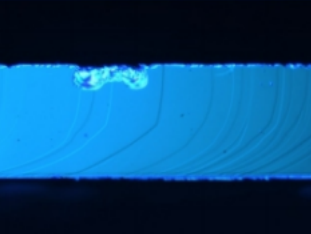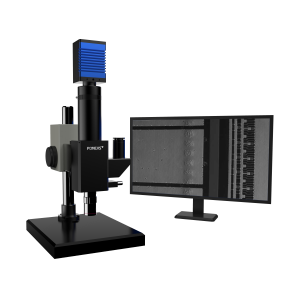Application of DIC differential interference video microscopy for solving texture detection
Desintegration testing is an inspection method used to observe and analyse the structure of the internal desintegration grain in a material. The desintegration grain is a microscopic crack or defect formed inside the material due to stress, temperature and other factors, and they have an important influence on the performance of the material. Through the decohesive grain inspection, the internal structural state of the material can be understood, which provides an important basis for the performance evaluation, quality control and failure analysis of the material.


Advantages of DIC differential interference video microscopy in solving texture detection:
High-resolution imaging: DIC differential interference video microscope adopts the differential interference contrast method, through the adjustment of the relative phase difference, to achieve a variety of optical range difference measurement, so as to obtain more fine surface topography information. Its resolution can reach sub-nanometre level, which can clearly observe the detailed information on the morphology, distribution and size of the disintegration texture, providing high-resolution imaging support for disintegration texture detection.
Non-contact and non-destructive inspection: DIC adopts a non-contact measurement method, which can be used to inspect the texture without contacting with the sample. This non-destructive approach avoids the damage and contamination that can be caused to samples by traditional inspection methods, making it particularly suitable for observation and research of biological and medical samples.
Rapid Detection: DIC adopts digital image processing technology, which enables rapid detection and analysis of texture. The software automatically identifies and marks the position and size of the texture, which greatly improves the detection efficiency and shortens the detection period.
Quantitative analysis: DIC differential interference video microscope can not only qualitatively observe the decoupling pattern, but also quantitatively analyse it. For example, it can calculate the number, density, length and other parameters of the texture, providing more accurate data support for material performance evaluation.
Wide range of applications: DIC Differential Interference Video Microscope is widely used in life sciences, semiconductors, FPDs, circuit packages, materials science, inspection of castings/metal/ceramic parts, precision moulds and other fields. The technology also has a wide range of application prospects in desmear texture detection, which can be used for desmear texture detection in different materials and different application scenarios.


DIC Differential Interference Video Microscopy has demonstrated various advantages such as high resolution, non-contact, non-destructive detection, rapid detection and quantitative analysis in texturing inspection. These advantages make DIC an important tool in the field of texture detection, providing strong support for material performance evaluation, quality control and failure analysis.
Product recommendation
TECHNICAL SOLUTION
MORE+You may also be interested in the following information
FREE CONSULTING SERVICE
Let’s help you to find the right solution for your project!


 ASK POMEAS
ASK POMEAS  PRICE INQUIRY
PRICE INQUIRY  REQUEST DEMO/TEST
REQUEST DEMO/TEST  FREE TRIAL UNIT
FREE TRIAL UNIT  ACCURATE SELECTION
ACCURATE SELECTION  ADDRESS
ADDRESS Tel:+ 86-0769-2266 0867
Tel:+ 86-0769-2266 0867 Fax:+ 86-0769-2266 0867
Fax:+ 86-0769-2266 0867 E-mail:marketing@pomeas.com
E-mail:marketing@pomeas.com
